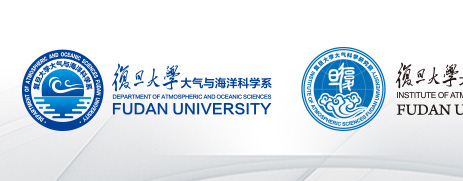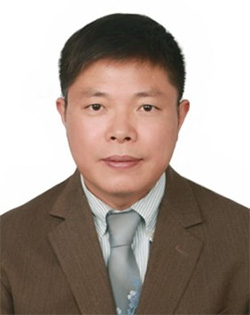www.94365.com, Email: qigangwu@fudan.edu.cn.
(本人长期招收研究生和博士后,欢迎对气候变化感兴趣者邮件联系)
学习经历
博士,1995/09-2000/05,美国 Texas A&M University,大气科学系
硕士,1992/09-1989/07,南京大学 气象系
学士,1985/09-1989/07,南京大学 气象系
工作经历
2018/02-现在: ?????教授,复旦大学
2010/05-2018/01: ??教授,南京大学
2009/11-2010/02 Visiting Scientist, University of Alaska Fairbanks, International Arctic Research Center
2004/11-2009/10 Research Scientist, University of Oklahoma, School of Meteorology
2002/03-2004/10 Postdoctoral Scientist, Center for Ocean-Land-Atmosphere Studies.
2000/01-2002/02 Postdoctoral Research Associate, Texas A&M University, Dept. of Atmospheric Sciences
1992/08-1995/08 ?技术员, 中国农业科学院气象所
研究方向: 全球气候变化;冰雪圈-大气相互作用;海气相互作用;东亚气候;大气环流
主持课题
国家自然科学基金面上项目:“研究秋季雪盖和北极海冰异常对冬季大气环流的影响及在季节气候预报中的应用”(41075052, 2011-2013);
国家重点基础研究发展计划项目课题:“低纬度印太海盆增暖对我国季风气候的影响”(2012CB956002, 2012-2016).
其他:
2014/01-现在: 中国气象学会冰冻圈与极地气象委员会委员;
2014/01-现在: “Advances in Atmospheric Sciences” Editor
2017/01-现在: “Journal of Meteorological Research” Editor
现有研究方向详细介绍:
- 全球气候变化: 利用统计和数值模拟结果比较人为强迫和外界驱动因子等对全球及区域气候变化的不同影响,进而对全球和区域观测气候变化进行归因分析;
- 海冰-大气相互作用: 分析北极海冰消融的成因,特别是大气环流的相对作用;利用观测和模拟研究评估秋冬季海冰减少对北半球冬季气候的影响;
- 积雪气候效应研究: 我们的观测和数值模拟均表明秋冬季青藏高原地区雪盖偏多能引起冬季类似PNA遥相关型的大气响应。目前我们正在开展1979年后积雪趋势强迫产生的气候效应模拟试验,评估积雪的长期气候效应;
- 海气相互作用:中纬度海气相互作用及其相关的季节气候预报,以及热带海洋-中高纬大气相互作用等方面研究。近期研究重点包括:热带印度洋增暖对大尺度大气环流及对东亚季风环流的影响;海温年代际变率IPO/PDO,AMO的气候影响;不同强度ENSO的气候影响;
- 大气环流:早期我关注北极涛动和太平洋北美遥相关等的动力学机制,及对长期气候变化影响。近期我的研究揭示下垫面强迫对这些大气环流主要变率模态的可预报性。
主要SCI论文 (*为通信作者论文)
- Wu, Q.*, Y. Yao, S. Liu, D. Cao, L. Cheng, H. Hu, L. Sun, Y. Yao, Z. Yang, X. Gao and S. R. Schroeder, 2018: Tropical Indian Ocean Warming Contributions to China Winter Climate Trends Since 1960. Climate Dynamics, 50, https://doi.org/10.1007/s00382-017-4059-1.
- Cao, D. Q. Wu*, A. Hu, Y. Yao, S. Liu, S. R. Schroeder, and F. Yang,2017:Linear and Nonlinear Winter Atmospheric Responses to Extreme Phases of Low Frequency Pacific Sea Surface Temperature Variability. Climate Dynamics, 50, https://doi.org/10.1007/s00382-018-4127-1.
- Liu, S., Q. Wu*, X. Ren, Y. Yao, S. R. Schroeder and H. Hu, 2017: Modeled Northern Hemisphere autumn and winter climate responses to realistic Tibet Plateau and Mongolia snow anomalies. Journal of Climate, 30, 9435-9454.
- Wu, Q., L. Cheng, D. Chan, Y. Yao, H. Hu and Y. Yao, 2016: Suppressed mid-latitude summer atmospheric warming by Arctic sea ice loss during 1979-2012. Geophysical Research Letters. 43, 2792–2800.
- Hu, C., S. Yang, Q. Wu, Z. Li, J. Chen, K. Deng, T. Zhang, and C. Zhang, 2016: ?Shifting El Ni?o inhibits summer Arctic warming and Arctic sea-ice melting over the Canada Basin. Nature. Communications. 7, 11721. doi: 10.1038/ncomms11721.
- Hu, C., Q. Wu*, S. Yang, 2016:? A linkage observed between austral autumn Antarctic Oscillation and preceding SST anomalies. Journal of Climate, 29, 2109-2122.
- Chan, D., Q. Wu*, G. Jiang and X. Dai, 2016: Projected shifts in Koppen climate zones over China and their temporal evolution in CMIP5 multi-model simulations. Advances in Atmospheric Sciences, 33, 1-11.?? (AAS网站列为亮点论文,作为期刊封面论文发表)
- Hu, C., S. Yang, Q. Wu, 2016: Reinspecting two types of El Ni?o: a new pair of Ni?o indices for improving real-time ENSO monitoring. Climate Dynamics, 47, 4031-4049.
- Chan, D. and Q. Wu*, 2015: Significant anthropogenic-induced changes of climate classes since 1950. Scientific Reports.5, 13487; doi: 10.1038/srep13487.
- Chan D. and Q. Wu*, 2015: Attributing observed SST trends and sub-continental land warming to anthropogenic forcing during 1979-2005. Journal of Climate, 29, 3152-3170.??
- Yao, Y., H. Lin, and Q. Wu, 2015: Subseasonal variability of precipitation in China during boreal winter. Journal of Climate, 28, 6548-6559.
- Hu, C., S. Yang, and Q. Wu, 2015: An optimal index for measuring the effect of East Asian winter monsoon on China winter temperature. Climate Dynamics, 45, 2571-2589.
- Wu, Q., J. Zhang, X. Zhang, and W., Tao 2014: Interannual variability and long-term changes of atmospheric circulation over the Chukchi-Beaufort Seas. Journal of Climate, 27, 4871-4889.
- Hu, H., J. He, Q. Wu, and Y. Zhang, 2011: The Indian Ocean’s asymmetric effect on the coupling of the Northwest Pacific SST and anticyclone anomalies during its spring-summer transition after El Ni?o. Journal of Oceanography, 67, 315-321,DOI 10.1007/s10872-011-0039-y.
- Wu, Q., H. Hu and L. Zhang, 2011: Observed influences of autumn-early winter Eurasian snow cover anomalies on the hemispheric PNA-like variability in winter. Journal of Climate. 24 2017-2023.
- ?Wu, Q., and X. Zhang, 2011: Observed evidence of an impact of the Antarctic sea ice dipole on the Antarctic Oscillation.? Journal of Climate. 24. ?4508-4518.
- Wu, Q., 2010: Associations of diurnal temperature range change with the leading climate variability modes during the Northern Hemisphere wintertime and their implication on the detection of regional climate trends, Journal of Geophysical Research, 115, D19101,doi:10.1029/2010JD014026.
- Wu, Q., and X. Zhang, 2010: Observed forcing feedback processes between Northern Hemisphere atmospheric circulation and Arctic sea ice coverage, Journal of Geophysical Research, 115, D14119, doi:10.1029/2009JD013574.
- Wu, Q., 2010: Forcing of tropical SST anomalies by wintertime AO-like variability. Journal of Climate. 23, 2465-2472.
- Rosenzweig C., D. J. Karoly, M. Vicarelli, P. Neofotis, Q. Wu, G. Casassa, A. Menzel, T. L. Root, N. Estrella, B. Seguin, P. Tryjanowski, C. Liu, S. Rawlins, and A. Imeson, 2008: Attributing physical and biological impacts to anthropogenic climate change. Nature, 453, 353-358.
- Wu, Q., 2008: Observed impact of subtropical-midlatitude South Atlantic SST anomalies on the atmospheric circulation, Geophysical Research Letters, 35, L22803, doi:10.1029/2008GL035488.
- Wu, Q., D. J. Karoly, G. R. North, 2008: Role of water vapor feedback on the amplitude of season cycle in the global mean surface air temperature, Geophysical Research Letters, 35, L08711. doi:10.1029/2008GL033454.
- Wu, Q., and D. J. Karoly, 2007: Implications of changes in the atmospheric circulation on???? the detection of regional surface air temperature trends. Geophysical Research Letters, 34, L08703,doi:10.1029/2006GL028502.
- Karoly D. J., and Q. Wu, 2005: Detection of regional surface temperature trends. Journal of Climate, 18, 4337-4343.?
- Wu, Q., and D. M. Straus, 2004: . Journal of Climate, 17, 2139–2156.
- Wu, Q., and D. M. Straus, 2004: On the existence of hemispheric-wide climate variations. Journal of Geophysical Research, 109, D06118, doi:10.1029/2003JD004230.
- Wu, Q., and G. R. North, 2003: Statistical of calendar month averages of surface temperature: A possible relationship to climate sensitivity.? Journal of Geophysical Research, 108, 4071, doi:10.1029/2002JD002218.
- Wu, Q., and D. M. Straus, 2003: Multiple planetary flow regimes and the eddy forcings in the Northern Hemisphere wintertime variability. Geophysical Research Letters, 30, 1861. 10.1029/2003GL017435.
- Wu, Q., and G. R. North, 2002: Climate sensitivity and thermal inertia.? Geophysical Research Letters, 29 (15), 1707, doi:10.1029/2002GL014864.
- North, G. R., and Q. Wu, 2001: Detecting climate signals using space-time EOFs.? Journal of Climate, 14, 1839-1863.
- Kim, K.-Y., and Q. Wu, 2000: Optimal detection using cyclostationary EOFs. Journal of Climate, 13, 938-950.
- Kim, K.-Y., and Q. Wu, 1999: A comparison study of EOF techniques: analysis of nonstationary data with? periodic? statistics.? Journal of Climate, 12, 185-199.
|


